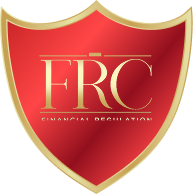Wealth management is one of the most important services offered in the financial sector, aimed at helping individuals, families, and institutions manage their assets and investments. For a wealth management firm to thrive in an increasingly competitive landscape, trust is paramount. It is the cornerstone of any client relationship and one of the most critical elements to retaining clients in the long term. However, trust is not something that can be easily built or maintained; it requires intentional effort, particularly through transparent wealth management practices.
The practice of transparent wealth management is about more than just providing clear communication to clients—it’s about ensuring that they fully understand the financial products and services they are being offered, how their money is being managed, and how the wealth manager is compensated for their services. In this article, we will delve deep into how transparent wealth management practices are essential for building trust, what transparent wealth management looks like in practice, and how wealth managers can foster long-term, trustworthy relationships with their clients in the UK.
Trust is the bedrock of any financial advisory or wealth management relationship. Clients are entrusting their financial security to wealth managers, which can significantly impact their financial future. The relationship is inherently personal, and clients need to feel confident that their wealth manager has their best interests at heart. Without trust, clients may become skeptical, disengage, or even decide to take their business elsewhere.
According to a 2020 survey by the Chartered Institute for Securities & Investment (CISI), more than 70% of clients indicated that transparency was the most important factor when selecting a financial advisor. Clients want to feel that their wealth manager is honest, open, and straightforward, and they expect their advisors to provide clear information regarding fees, strategies, risks, and potential returns.
By cultivating trust through transparent practices, wealth managers can increase client loyalty, improve satisfaction, and build long-term relationships. But how do wealth managers achieve this goal in a way that is sustainable and meaningful?
Clear and effective communication is one of the cornerstones of transparent wealth management. This includes setting clear expectations from the very beginning of the client relationship and ensuring that clients fully understand how their investments will be managed. Wealth managers should be able to explain complex financial concepts in a way that clients can easily grasp, avoiding jargon and providing relatable examples when needed.
One of the most critical aspects of transparency is being clear about fees. Many clients are hesitant to work with wealth managers because they feel the cost of services is ambiguous or hidden. In fact, 47% of UK investors state that they are dissatisfied with the lack of transparency regarding the fees they pay for investment management services, according to a report by the Financial Conduct Authority (FCA).
Transparent wealth managers make sure clients are fully informed about how they will be charged, whether through flat fees, hourly rates, or commissions. Additionally, disclosing any potential conflicts of interest, such as receiving commissions for recommending certain products, is essential. Clients need to feel that they are being treated fairly, without hidden fees or undue influence on their financial decisions.
Another key element of transparent wealth management is the disclosure of risk. All investments carry some level of risk, and it is essential that wealth managers are upfront about these risks with their clients. Failing to do so can lead to clients feeling misled or betrayed if their investments underperform or experience volatility.
Transparent wealth managers provide clients with detailed risk assessments that are tailored to their unique financial situation and goals. They explain the potential outcomes of different investment strategies and help clients understand the trade-offs involved in achieving their objectives. Transparency around risk builds trust because clients feel that they are being empowered to make informed decisions.
Transparency doesn’t end once the wealth manager has been hired and investments have been made. Regular reporting and updates are crucial to maintaining a transparent relationship with clients. This includes providing periodic statements that clearly show the performance of the client’s portfolio, as well as any changes or rebalancing that has taken place.
Wealth managers should be readily available to answer client questions and concerns, and they should encourage a collaborative approach where clients can actively participate in the management of their wealth. Being accountable to clients through these regular updates reassures them that their wealth manager is working in their best interests.
Every wealth manager should have a clearly defined investment strategy that is communicated to clients. Whether the strategy is focused on growth, income generation, or preservation of capital, clients need to understand the logic behind the wealth manager’s decisions. A transparent wealth manager should take the time to explain why a particular investment choice is made, the potential benefits and risks, and how it fits into the broader context of the client’s financial goals.
By ensuring clients are well-informed about the investment strategy, wealth managers build trust by showing that their decisions are based on thorough analysis and a clear rationale. This transparency also allows clients to make more confident decisions about whether the strategy aligns with their own financial priorities.
While transparency is a critical part of building trust, it’s not always easy to implement. Wealth managers may face challenges such as balancing the complexity of financial products with the need to make them understandable, or managing clients’ expectations regarding performance. However, there are several best practices that wealth managers can adopt to foster transparency and build lasting client relationships.
A wealth manager’s role is not only to manage clients’ assets but also to educate them. Providing regular educational content, such as newsletters, webinars, or one-on-one meetings, is a great way to ensure that clients understand the reasoning behind the investment choices made on their behalf.
By taking the time to educate clients on important financial matters—such as market trends, tax implications, and asset allocation strategies—wealth managers can help clients feel empowered and more confident in the decisions being made. This transparent communication builds a sense of partnership between the wealth manager and the client.
In today’s digital age, technology can be an excellent tool to improve transparency in wealth management. There are a variety of tools available that can help wealth managers provide clients with real-time access to their portfolios, including investment performance tracking platforms and automated reporting systems.
By providing clients with digital access to their accounts and real-time performance data, wealth managers can ensure that clients feel informed and engaged in the management of their wealth. This accessibility fosters trust, as clients can see for themselves how their investments are performing without having to rely on periodic updates from their wealth manager.
Transparency is not just about specific actions; it’s about building a culture of integrity within the wealth management firm. This culture should be built on the principles of honesty, openness, and ethical behaviour. Wealth managers should be transparent not only with their clients but also with each other, creating an environment where trust is valued and reinforced at every level of the firm.
Fostering a culture of integrity requires ongoing training and development, as well as a commitment to ethical practices. By promoting transparency within the team and ensuring that all staff members adhere to the highest standards of professionalism, wealth managers can further enhance their clients’ trust.
Despite the clear benefits of transparency, some wealth managers may face challenges in adopting transparent practices. These challenges could include a fear of losing clients if fees or risks are disclosed, or concerns about making the investment process seem overly complicated or overwhelming.
However, the long-term advantages of transparent wealth management far outweigh the short-term discomfort that might come with making certain disclosures. In fact, transparency can help manage client expectations and ensure that clients are fully aware of the potential risks and rewards of their investments, reducing the likelihood of misunderstandings or disputes in the future.
Additionally, clear and transparent communication can help wealth managers build rapport with clients and create a deeper level of trust. Clients who feel well-informed and respected are more likely to remain loyal, even during times of market volatility or underperformance.
In conclusion, transparent wealth management practices are essential for building and maintaining trust in the financial advisory industry. Clients want to feel confident that their wealth manager is working in their best interest, and transparency is the key to achieving that confidence. By offering clear communication, transparent fees, full risk disclosure, regular reporting, and well-defined investment strategies, wealth managers can create strong, long-lasting relationships with their clients.
To implement these practices, wealth managers must prioritise client education, leverage technology to enhance accessibility and transparency, and foster a culture of integrity within their firms. While there may be challenges along the way, the benefits of building trust through transparent wealth management practices are undeniable. By doing so, wealth managers can not only retain clients but also enhance their reputation in the industry and achieve long-term success.
Trust is not built overnight, but through consistent, transparent actions, wealth managers can establish relationships that last for decades. In the fast-evolving landscape of wealth management, trust and transparency are the foundations upon which enduring success is built.
Be the first to know about new class launches and announcements.


Financial writer and analyst Ron Finely shows you how to navigate financial markets, manage investments, and build wealth through strategic decision-making.
